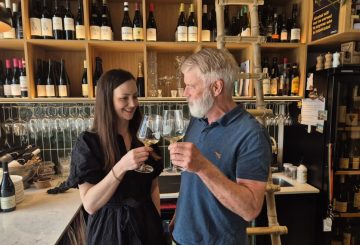Cuối tuần qua, 500 người đã tham gia một sự kiện đi bộ 24 giờ, được gọi là TWALK, ở vùng đồng bằng cỏ của vùng cao Canterbury. Những người tham gia được giao nhiệm vụ tìm kiếm các điểm đánh dấu nhỏ và giải câu đố trong một sự kiện theo phong cách rogain. Sự kiện này, đã diễn ra từ năm 1967, được tổ chức bởi các tình nguyện viên từ Câu lạc bộ Tramping Đại học Canterbury.
Sự kiện TWALK đầu tiên được tổ chức tại Mt Thomas và được tổ chức bởi Greg Martin, người đã mang ý tưởng từ Úc. Ban đầu, sự kiện này gây ra một số cuộc đối đầu với nông dân địa phương vì họ không được thông báo về hàng trăm người lạ đi bộ trên mảnh đất của họ. Tuy nhiên, các nhà tổ chức hiện tại đảm bảo chủ đất luôn tham gia và thường tặng một khoản quyên góp nhỏ hoặc công việc cộng đồng như một biểu hiện đánh giá cao.
Năm nay, sự kiện được tổ chức gần sông Rangitata ở Mesopotamia. Đội chiến thắng được gọi là “Pack of Rafters”. Trong những năm qua, các địa điểm TWALK đã nằm rải rác trên khắp Canterbury, bao gồm Hồ Heron, Công viên Bảo tồn Hakatere, Hồ Coleridge, Bán đảo Banks và Núi Lyford.
Theo Alex Monckton, một trong những nhà tổ chức TWALK 2024, sự kiện này là duy nhất vì nó tập trung nhiều hơn vào niềm vui và giải trí hơn là cạnh tranh kỹ thuật và thể chất. Sự kiện bao gồm trang phục, manh mối ngớ ngẩn, một địa điểm bí ẩn và các cuộc thi ngẫu nhiên.
Vào cuối những năm 1980, trang phục đã được giới thiệu cho cuộc thi, những người tham gia phải mặc ít nhất là chặng đầu tiên. Người chiến thắng ăn mặc đẹp nhất năm nay đã chế tạo một chiếc xe bằng bìa cứng để đeo.
Vào cuối sự kiện, người tham gia sẽ đi bộ 100 km, hoàn thành năm chặng, mỗi chặng dài khoảng 10km đến 20km. Trên đường đi, các đội phải giải quyết manh mối khó hiểu.
Nhà Hash cung cấp một nơi nghỉ ngơi và phục hồi chức năng dưới dạng thức ăn nóng được nấu bởi các tình nguyện viên. Nick Slegers, chủ tịch CUTC, cho biết ông tự hào về việc giúp điều hành TWALK hơn là học đại học của mình, nhấn mạnh niềm đam mê và sự cống hiến của các tình nguyện viên sinh viên.




























































